Fear is one of the two principal obstacles preventing patients from undergoing LASIK, the other being cost. Although I’ve discussed in a previous post how LASIK is safer and more cost-effective than contact lenses, I’ve yet to write about pain. And the fear of pain is an adaptation that has prevented needless injury throughout human history.
So, does LASIK hurt? Should patients fear the pain? No! LASIK is not a painful procedure. Furthermore, your LASIK surgeon will take every step to ensure you are comfortable. Skilled surgeons, the latest equipment, and well-established processes have helped make LASIK a painless and rewarding procedure¾more than 30 million times over.
A painless process allows patients to remain awake and alert during surgery. Many surgeons offer mild sedation, such as a single Valium tablet, for optimal relaxation during surgery. An appendectomy, on the other hand, would cause excruciating pain without heavy sedation. Let’s explore how laser eye surgery works to understand why LASIK causes little or no pain.
How Accurate is LASIK?

The goal of laser eye surgery – including LASIK, SMILE, and PRK – is to gently reshape the cornea, treating very small portions of tissue with impeccable precision. How precise? This image shows a human hair treated by the excimer laser that performs LASIK and PRK. The laser removes tissue in a predetermined pattern, accurate up to one-thousandth of a millimeter. Note the lack of collateral damage to surrounding tissue: a vital criterion in pain prevention.
Is LASIK Painful?

Your cornea has the highest density of nerve endings in your entire body. When irritated, these nerves instantaneously generate the sensation of pain. You experience this first-hand if you’ve ever been poked in the eye; it hurts! But corneal nerves are critical for initiating the blink reflex, producing tears, and preventing injury, all in the name of preserving vision. Luckily, anesthetic drops can thoroughly desensitize these nerves, making LASIK a painless procedure.
Technology Matters
Patients may feel pressure during the flap creation stage of LASIK, but this is much less common with newer femtosecond lasers. Corsini Laser Eye Center uses the Visumax500 femtosecond laser, the gentlest femtosecond laser on the planet. The Visumax500 is used for both LASIK and SMILE, and patients routinely describe this stage of the surgery as painless.
What’s that Smell?
LASIK and PRK both utilize an excimer laser to achieve their desired effect: the miracle of clear vision! This laser reshapes your cornea with a cool beam that avoids collateral damage (see the image of the human hair above).

During the excimer treatment – which generally takes between five and twenty seconds per eye with the ultra-fast EX500 used at Corsini Laser Eye Center – patients may detect a variety of smells emanating from the laser, ranging from ozone to burning to nothing at all. These smells are normal and result from the laser’s interaction with your cornea.
Taste and Sound
Medicated drops used after LASIK can drain down your tear drainage ducts and into the back of your throat, leaving some patients with a slightly bitter aftertaste. But don’t worry: the surgery itself is without taste!
Patients can hear the excimer laser during the ~five-twenty-five seconds of treatment, which sounds like a rapid clicking or whirring. The length of the treatment is proportionate to the size of your glasses prescription.
Blinking Lights
Not surprisingly, your vision is the most critical sense stimulated during laser eye surgery. The femtosecond and excimer lasers utilize blinking lights for patients to focus on during the treatment. These lights do not represent the laser beam, but they are simply a target for patients to fixate their eyes during surgery. But don’t worry; nobody’s eyes can stay perfectly still. Our eyes routinely use micro-fixation movements to remain focused on an image of interest. The lasers are engineered to adapt to these and larger eye movements to ensure that every patient receives an accurate treatment. Your surgeon also has many tools to deliver a centered and accurate treatment for each patient.
What if I Blink During LASIK?
Speaking of tools and blinking, LASIK surgeons use a special tool to keep your eyelids open during surgery. This tool may briefly feel uncomfortable for some patients until their eyelid tension relaxes, usually taking just a few seconds. A skilled surgeon will also talk to you to make you feel comfortable and confident during the procedure. Most patients are surprised how short the surgery takes, usually less than fifteen minutes for both eyes.
Is LASIK Recovery Painful?
After the numbing drops wear off, which usually occurs on the patient’s ride home, patients commonly start to feel a sore, burning, itching, or irritating sensation in their eyes. They may also experience light sensitivity. These sensations are typical, expected, and temporary. Your surgeon will provide you with sunglasses and lubricating drops for comfort. After a post-surgery nap, most patients awake with no pain. You may take an over-the-counter medication such as Acetaminophen (Tylenol) or Ibuprofen (Motrin) to aid recovery.
How Long is LASIK Recovery?
After the first two hours following surgery, most patients do not experience any pain. Their vision slowly improves throughout the day and is clear enough to allow safe driving the next morning. Many patients see 20/20 or better within twenty-four hours of surgery, all without contacts or glasses. It is expected to have dry eyes the first week after surgery, so frequent application of preservative-free lubricating drops is essential. Dry eye symptoms may persist for longer and should be addressed at follow-up appointments with your surgeon.
Conclusion
While patients may experience mild pressure during the laser vision correction, most report no pain. The vast majority of our patients look back after the procedure and say they “worried over nothing.” Hopefully, this article will help calm your anxiety by detailing what to expect during and after surgery. As always, please contact your surgeon with any concerns or questions.
Thanks for reading!
Cheers,
Jonathan Corsini, MD


